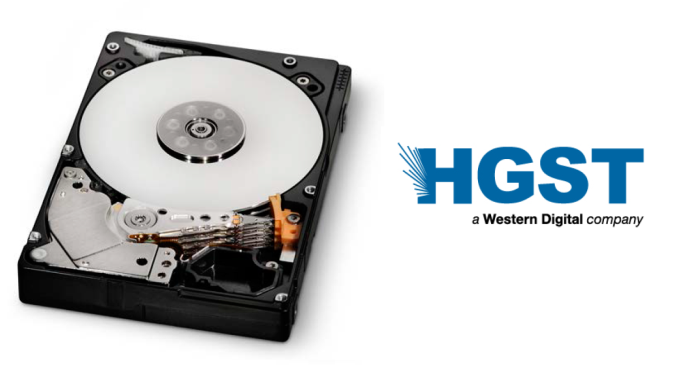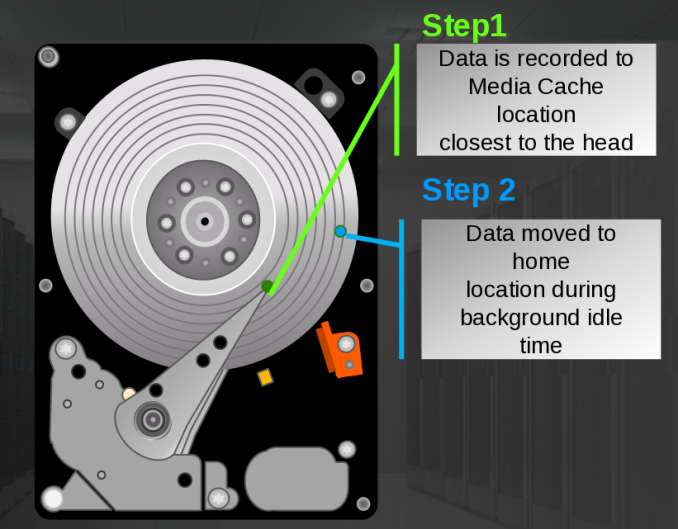HGST Expands Ultrastar C10K Family with 1.8 TB 12 Gbps SAS HDD
by Ganesh T S on July 9, 2014 8:00 AM EST- Posted in
- Enterprise
- Storage
- HGST

HGST (a Western Digital company) today launched the Ultrastar C10K1800, a 10000 RPM hard drive in the 2.5" form factor targeting enterprise / data center applications. Earlier versions of the Ultrastar C10K family topped out at 1.2 TB and came with a 6 Gbps SAS connector. The new member has a 1.8 TB capacity and comes with a cutting-edge 12 Gbps SAS connection. With this introduction, HGST is moving all capacities in the Ultrastar C10K family to 12 Gbps SAS.
Even though flash storage is grabbing all the headlines right now, there are many applications where the premium for IOPS doesn't need to be paid, and cost per GB wins out. It is this market segment that HGST hopes to target with the Ultrastar C10K1800.
In order to improve performance over previous generation Ultrastar C10K HDDs, HGST has put in a 'media cache' - a disk-based caching technology providing a large non-volatile area for data storage. HGST claims that there is a significant improvement in write performance even at high workloads (compared to NAND-based caches). Improvements are in the order of 2.5x for random writes and 23% for sequential accesses when compared to older Ultrastar C10K drives.
HGST's Disk-based Media Cache
The high level operation of the disk-based media cache is explained in the above picture. While HGST wasn't ready to comment on how much of the drive capacity was being used as a disk cache, they did mention that the cache has no effect on the capacity visible to users. This technology is also being rolled out across all Ultrastar C10K models.
The hard drive family comes with both 4K native / 512 emulation and a 512 native sectors version for legacy compatibility. HGST also claims improved power efficiency. The drives are already being qualified by OEMs and are available now. The FIPS-certified encryption-enabled drives will ship early next year.











19 Comments
View All Comments
ddriver - Wednesday, July 9, 2014 - link
WD taking people for chumps with those claims of "media cache closer to the head" nonsense. Seriously, "improved cache" would have been better than this snake oil nonsense.ganeshts - Wednesday, July 9, 2014 - link
This is non-volatile cache - Power loss doesn't mean data loss.Usually, the 'cache' that people talk about with hard drives is DRAM buffer.
This is an improvement over the short stroke technology that Hitachi pioneered in the late 2000s.
Paul Tarnowski - Wednesday, July 9, 2014 - link
I wonder what the effect is on bit rot. Not that an enterprise system is going to keep a lot of idle information, but considering that the drive is actually rewriting the data across sectors as part of it's caching system should have a hopefully positive effect.Bob N - Thursday, July 10, 2014 - link
Any modern drive is constantly dealing with bit rot, every time you write data to a drive some amount of (accumulative) damage is done to nearby tracks of data. The repair is handled by the drive, business as usual...Zap - Thursday, July 10, 2014 - link
RE: "media cache closer to the head"This actually makes sense. The heads usually idles back towards the middle of the drive. If that's where the "media cache" location is, then indeed it is closer to the head, and the drive can start writing to the disk immediately instead of having to move the head to the actual location first.
Guspaz - Wednesday, July 9, 2014 - link
And how much does it cost? The 1.2TB version of this drive has a street price of nearly $800. At these sort of prices, I can't see what the potential market for this drive would be. It has a huge price premium over enterprise 7200RPM drives, and much lower performance than enterprise SSDs. Is there really any need for a drive that sits in the middle, when you can just go multi-tier and combine a bunch of cheaper 7200RPM drives with SSDs for caching?cobrax5 - Thursday, July 10, 2014 - link
Yeah, it's hard to understand how 1.2TB for $800 is better than a couple of 1TB SSD's, aside from the SSD's taking up more ports. I can't imagine a this drive will be much more reliable than an SSD or, like you said, 7200RPM drives with SSD's for caching. I guess some people just want their "reliable" rotational storage. Maybe the non-volatile cache really pumps up performance to the point where it's worth the price.KAlmquist - Monday, July 14, 2014 - link
An all-SSD solution has a big price premium over these drives ($7600 for three ST800FM0053 solid state drives, vs. $1600 for two of these), and SSD caching works well only for certain workloads, so Hitachi is probably right that there is a market for these drives. But I bet the market is a lot smaller than it would have been a few years ago.Pork@III - Wednesday, July 9, 2014 - link
This drive has non ordinary consumer target. Wrong commens I read before mine.